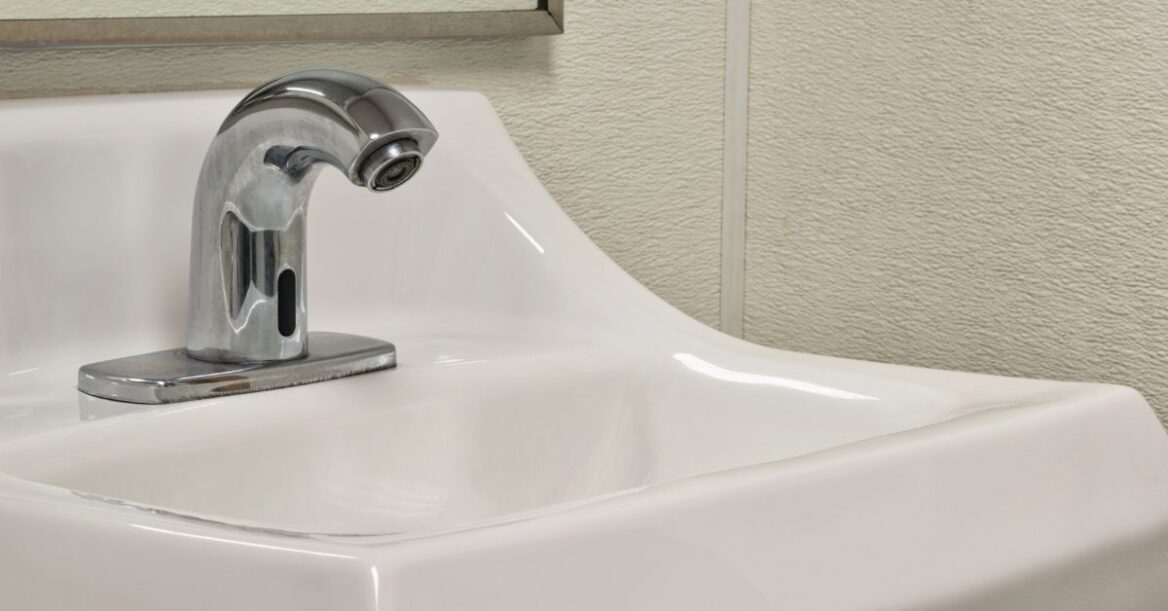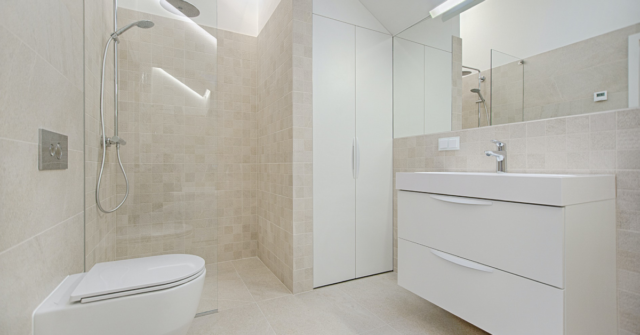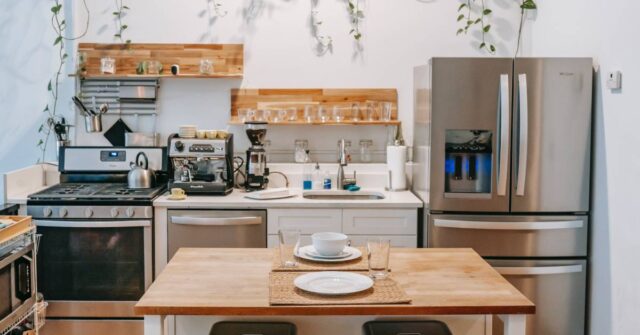As we strive for healthier living spaces, the revolution in bathroom technology offers not just comfort but paramount hygiene.
Touchless bathroom features are at the forefront, significantly reducing germ transfer while providing a sleek, modern look.
Let’s explore how these innovations are making bathrooms in Sydney safer and more sustainable.
Introduction to Touchless Technology in Hygiene
Touchless technology is revolutionizing bathroom designs, emphasizing hygiene and convenience. Let’s delve into how these technologies work and why they are beneficial for any modern bathroom.
Overview of Touchless Bathroom Technology
Touchless technology uses sensors to operate bathroom fixtures without the need for physical contact.
This approach not only limits the spread of pathogens but also enhances the user experience with its simplicity and efficiency.
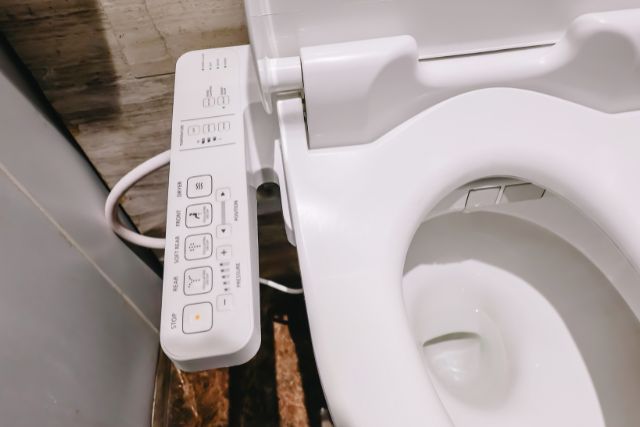
Benefits of Touchless Features for Hygiene and Health
Incorporating touchless features into the bathroom reduces touch points that can harbour bacteria and viruses.
Moreover, these features help in conserving water and reducing overall household waste, aligning with Sydney’s water-saving initiatives.
Key Touchless Technologies for Bathrooms
Key touchless technologies offer a variety of features tailored to improve bathroom hygiene and functionality. We will explore some of the most impactful options available on the market.
Automatic Faucets: Water Conservation and Hygiene
Automatic faucets equipped with motion sensors dispense water when they detect hands and automatically shut off when no longer needed.
This prevents water wastage and eliminates a common contact point for germs.
Touchless Soap Dispensers: Promoting Sanitation
Touchless soap dispensers deliver a measured dose of soap without the need to touch a pump, enhancing sanitation while ensuring optimal soap usage, crucial for effective handwashing.
Touchless Toilet Features: Enhancing Sanitary Conditions
Modern toilets now come with features like automatic lids and touch-free flushing, which not only reduce contact but also help maintain cleanliness and odour control.
Hands-Free Light Switches and Door Handles
Expanding touchless technology beyond fixtures, light switches and door handles can now be operated via sensors or using gestures, significantly reducing the need to touch surfaces that could spread germs.
Smart Bathroom Technology
Smart technology integrates seamlessly into bathroom environments, enhancing user experience through automation and advanced controls. Let’s look at some of the leading smart bathroom technologies.
Sensor-Activated Lighting Systems
Sensor-activated lighting systems adjust based on occupancy, enhancing convenience and energy efficiency—a smart upgrade for any Sydney home.
Smart Mirrors with Voice and Motion Control
Smart mirrors offer features like anti-fog, LED lighting, and voice-activated controls, allowing for a seamless and interactive morning routine.
Integrating Smart Home Assistants in Bathrooms
By integrating with home assistants, bathrooms can be controlled via voice to manage settings for temperature, lighting, and even water usage, streamlining the user experience.
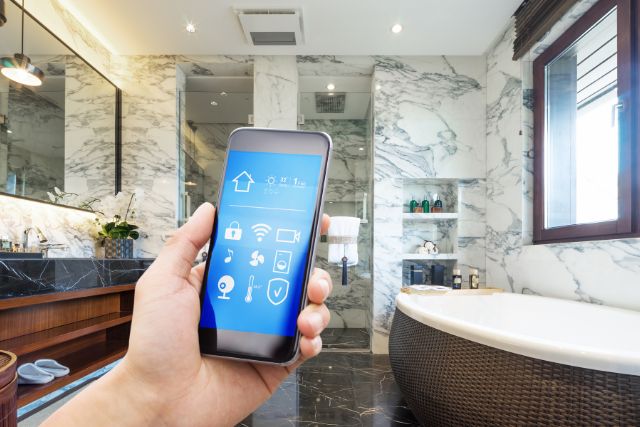
Design and Installation Considerations
Designing and installing touchless features requires careful consideration to ensure that they meet the specific needs of your home. Here are some guidelines to help you make the best choices.
Choosing the Right Touchless Features for Your Home
Selecting the right features involves considering the size of the bathroom, the users’ needs, and the compatibility with existing fixtures.
Installation Tips for Effective Use and Durability
Professional installation ensures optimal functionality and durability of touchless features. It’s crucial to have skilled technicians who understand the specific requirements of these advanced fixtures.
Maintenance and Troubleshooting Common Issues
Regular maintenance is essential to keep touchless features functioning smoothly. This section includes tips for troubleshooting common issues like sensor misalignment or water leakage.
Impact of Touchless Technology on Water and Energy Usage
The environmental impact of touchless technology is significant, influencing both water and energy consumption. We will explore how these technologies are making bathrooms more sustainable.
How Touchless Fixtures Conserve Water and Reduce Waste
Touchless technology is key in water conservation efforts, significantly reducing usage through controlled, efficient flows and automatic shut-offs.
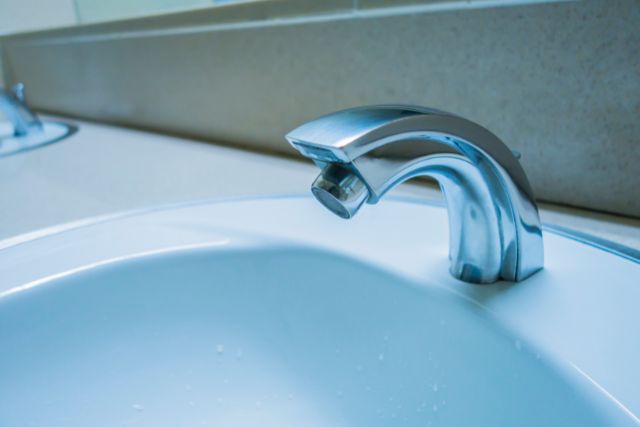
Energy Efficiency of Sensor-Based Bathroom Technologies
Despite using sensors, modern touchless features are designed to be low-energy, contributing to a reduction in overall household energy consumption.
Case Studies: Touchless Features in Sydney Bathrooms
Real-world applications of touchless technologies in Sydney provide insight into their practical benefits.
Below, we explore several case studies that showcase the effectiveness of these innovations in both residential and public settings.
Residential Success Stories
In the heart of Sydney’s Inner West, the Martin family recently renovated their home bathroom by installing touchless faucets and a smart toilet.
The touchless faucets have helped reduce their water usage by an impressive 20%, aligning with their goal of a more sustainable household.
The smart toilet, equipped with self-cleaning technology and touch-free flushing, has been particularly beneficial for their aging grandparents, enhancing accessibility and hygiene.
Another notable example is the Thompson residence in North Sydney, where touchless soap dispensers and automated light systems were installed.
These features have significantly minimized the residents’ direct contact with surfaces, reducing the spread of germs.
The Thompsons have noted a marked improvement in the cleanliness and usability of their space, with the added bonus of modernizing their home’s aesthetic.
Commercial Buildings and Public Facilities
At a newly constructed office building in Sydney’s CBD, touchless technologies are at the forefront of its bathroom facilities.
Equipped with sensor-based faucets, soap dispensers, and doors, the building promotes a highly hygienic environment for its hundreds of daily users.
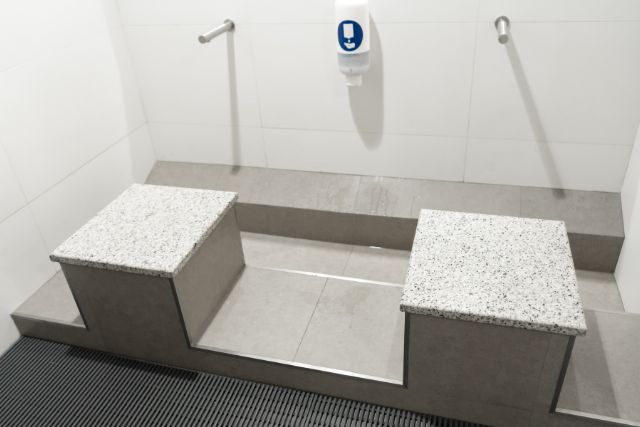
The management reports that these installations have led to lower maintenance costs and improved user satisfaction.
The City of Sydney also took the initiative by integrating touchless features into public restrooms in popular tourist areas such as the Royal Botanic Garden and Bondi Beach.
These bathrooms are fitted with touchless entry points, sinks, and hand-drying systems.
Feedback from the public has been overwhelmingly positive, noting the enhanced cleanliness and reduced wait times during high-traffic periods, demonstrating the city’s commitment to public health and safety.
These case studies underline the diverse applications and benefits of touchless bathroom technologies in Sydney, highlighting their effectiveness in enhancing hygiene, convenience, and sustainability across different settings.
Future Trends in Bathroom Technology
The future of bathroom technology holds promising advancements that aim to further integrate intelligence and convenience into our daily routines. Let’s examine what’s on the horizon.
Emerging Innovations in Touchless Bathroom Equipment
The future of bathroom technology includes advancements in AI that anticipate needs and manage resources, making bathrooms smarter and more responsive.
The Role of AI and Machine Learning in Bathroom Design
Artificial intelligence and machine learning are set to revolutionize bathroom design by enhancing the functionality of touchless devices and creating more personalized user experiences.
Conclusion: Embracing Hygiene Through Technology
As we conclude our exploration of touchless bathroom technology, it’s clear that these innovations offer more than just aesthetic appeal—they are a leap forward in hygienic living.

Summary of Benefits and Considerations
Touchless bathroom features offer a compelling blend of hygiene, efficiency, and innovation. They represent a significant step forward in making our living environments healthier and more sustainable.
Why Touchless is the Future of Bathroom Design
Embracing touchless technology in bathroom design not only caters to the health and safety needs of families but also aligns with environmental sustainability goals.
It’s clear that the path forward for modern bathrooms is one where technology meets hygiene.

